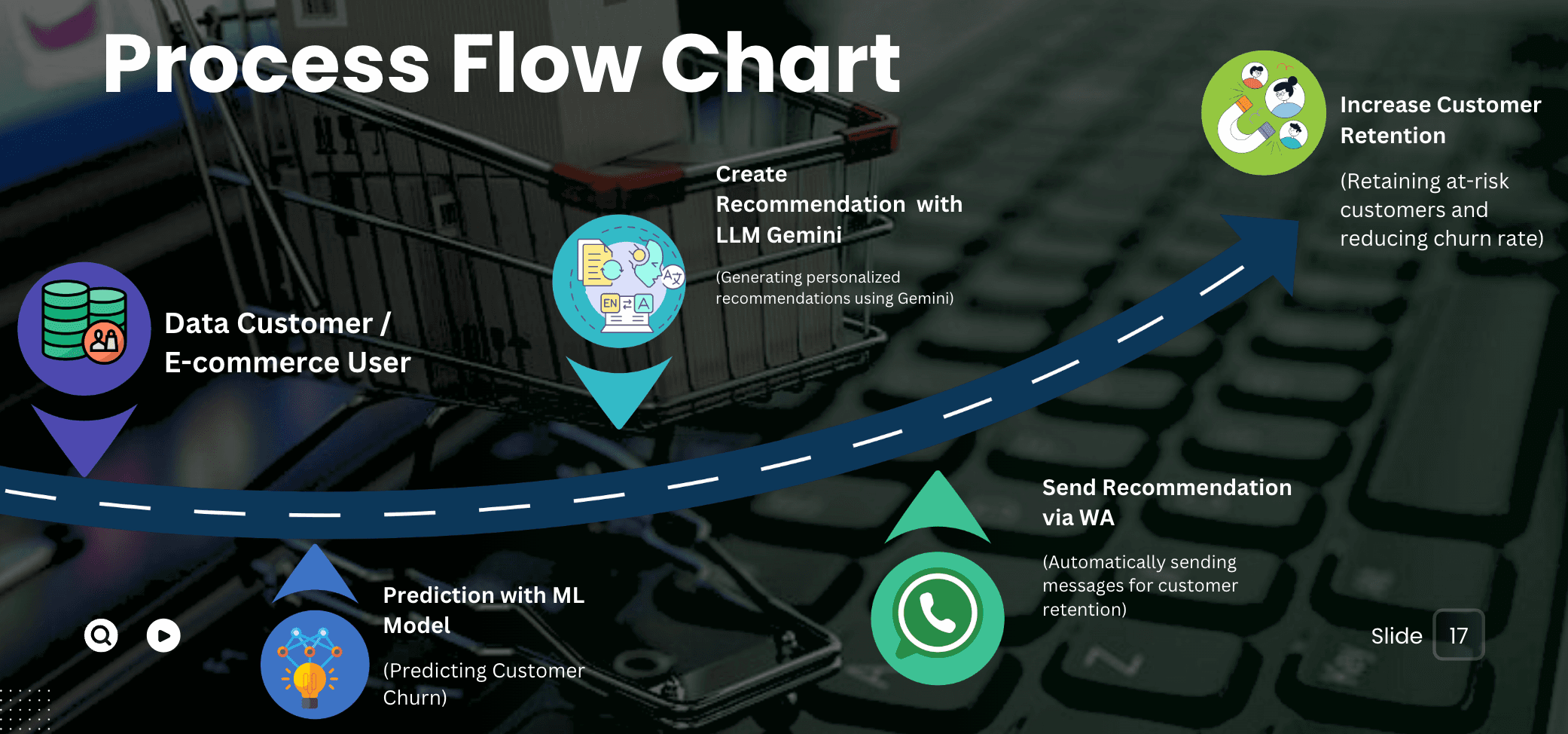Churn Prediction: Turning Churn into Opportunity
DATA SCIENCEData-Driven Insights on Retaining E-commerce Customers
A comprehensive customer churn prediction system designed to transform customer retention strategies for e-commerce businesses. This data-driven solution leverages advanced machine learning techniques to identify at-risk customers and provide actionable insights for retention campaigns. The project focuses on becoming a top customer-centric e-commerce leader by reducing customer churn, minimizing revenue losses, enhancing retention strategies, and ensuring consistent business growth while maintaining high customer satisfaction levels.
Project Goal
Become a top customer-centric e-commerce leader by reducing customer churn, minimizing revenue losses, and ensuring consistent growth.
Key Achievement
Successfully reduced customer churn by ≥69% with retention rate of ≥31% through advanced ML techniques.
Model Performance
SVM model achieving F-2 score of 0.86 with superior stability and lower overfitting risk.

Project Highlights
- Achieved 69% reduction in customer churn rate, exceeding the target objective
- Implemented Support Vector Machine (SVM) model with F-2 score of 0.86
- Developed real-time churn prediction system with Node.js deployment
- Created comprehensive customer retention strategy framework
- Established automated early warning system for at-risk customers
- Generated actionable business insights for proactive customer engagement
- Delivered measurable ROI through reduced customer acquisition costs
- Built scalable solution suitable for enterprise-level implementation
Technologies & Tools
Project Details
Project Development Stages
Business Problem Analysis
Conducted comprehensive analysis of customer churn patterns and business impact. Defined key performance indicators including target churn reduction of ≥69% and retention rate improvement to ≥31%. Established project scope focusing on e-commerce customer lifecycle management and revenue protection strategies.
Data Collection & Exploration
Gathered extensive customer behavioral data including transaction history, engagement metrics, demographic information, and support interactions. Performed exploratory data analysis to identify churn indicators and customer segmentation patterns. Conducted statistical analysis to understand feature correlations and business drivers.
Feature Engineering & Preprocessing
Developed sophisticated feature engineering pipeline including customer lifetime value calculations, recency-frequency-monetary (RFM) analysis, behavioral scoring, and engagement trend analysis. Implemented data preprocessing techniques including normalization, handling missing values, and outlier detection to ensure model robustness.
Model Development & Selection
Evaluated multiple machine learning algorithms including Random Forest, Gradient Boosting, Logistic Regression, and Support Vector Machine. Selected SVM for its superior stability, lower overfitting risk, and consistent performance across different customer segments. Optimized hyperparameters using grid search and cross-validation techniques.
Model Validation & Performance Optimization
Conducted rigorous model validation using stratified k-fold cross-validation and temporal validation techniques. Achieved F-2 score of 0.86, prioritizing recall to minimize false negatives in churn detection. Implemented comprehensive performance monitoring including precision, recall, accuracy, and business impact metrics.
Deployment & Real-time Integration
Developed production-ready churn prediction service using Node.js and Express.js framework. Created RESTful API endpoints for real-time churn scoring and batch prediction capabilities. Implemented automated model monitoring and alert systems for continuous performance tracking and model drift detection.
Business Impact & Continuous Improvement
Established feedback loops with business stakeholders to measure retention campaign effectiveness. Implemented A/B testing framework to validate intervention strategies. Created comprehensive reporting dashboard for executive visibility and strategic decision-making. Developed model retraining pipeline for continuous improvement.